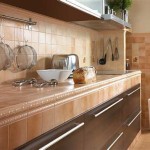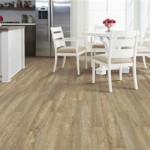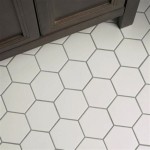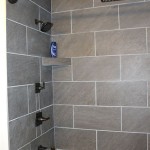The Beauty Of Wood Porcelain Tile Flooring In Bathrooms
Wood porcelain tile flooring has emerged as a popular choice for bathroom design, offering a compelling blend of aesthetic appeal and practical benefits. It effectively mimics the natural warmth and beauty of hardwood while simultaneously capitalizing on the inherent durability and water resistance of porcelain. This unique combination makes it an ideal surface material for the moisture-prone and high-traffic environment of the bathroom.
Unlike solid hardwood, which can warp, swell, and develop mold in humid conditions, wood porcelain tile maintains its structural integrity and visual charm over extended periods with minimal maintenance. This article will explore the key features, advantages, installation considerations, and design possibilities associated with wood porcelain tile flooring in bathrooms, offering comprehensive insights for homeowners and design professionals alike.
Aesthetic Versatility and Design Options
One of the primary drivers behind the popularity of wood porcelain tile is its remarkable aesthetic versatility. Manufacturers have perfected the art of replicating a wide range of wood species, finishes, and plank sizes, offering designers and homeowners a vast array of stylistic possibilities. From the rustic appeal of reclaimed barn wood to the sophisticated elegance of polished oak, wood porcelain tile can seamlessly integrate into diverse bathroom design schemes.
The range of available colors is equally extensive. Light-toned tiles, such as whitewashed maple or light ash, can create a bright and airy atmosphere, enhancing the sense of space in smaller bathrooms. Darker shades, like walnut or mahogany, can impart a sense of warmth, luxury, and drama. Furthermore, designers can incorporate multiple tile colors and patterns to create customized and visually striking layouts.
Beyond color, wood porcelain tile offers flexibility in terms of plank size and layout. Longer, wider planks can create a more contemporary and spacious feel, while shorter, narrower planks can evoke a more traditional and intimate ambiance. The tiles can be installed in a variety of patterns, including linear, herringbone, chevron, and staggered layouts, further customizing the overall aesthetic. The ability to mimic the natural variations in wood grain and knot patterns adds to the authenticity and realism of the tile, creating a visually rich and appealing surface.
The textured surface of many wood porcelain tiles enhances their realism and slip resistance. The subtle variations in texture mimic the feel of real wood, while also providing added traction, which is particularly important in the damp environment of a bathroom.
Durability and Water Resistance
The inherent durability and water resistance of porcelain are key factors that set wood porcelain tile apart from natural wood flooring. Porcelain is a dense and non-porous material, making it highly resistant to water absorption, staining, and scratching. This is especially critical in bathrooms, where exposure to moisture is constant and the risk of spills and splashes is high.
Unlike hardwood, which requires regular sealing and refinishing to protect it from water damage, wood porcelain tile requires minimal maintenance. Its non-porous surface prevents water from penetrating the tile, thus eliminating the risk of warping, swelling, or mold growth. This makes it a significantly more hygienic and long-lasting option for bathroom flooring.
Porcelain tiles are also highly resistant to scratching and abrasion, which is particularly important in high-traffic areas like bathrooms. The tiles can withstand the wear and tear of daily use without showing signs of damage, maintaining their aesthetic appeal for many years. Furthermore, porcelain is resistant to fading and discoloration, ensuring that the tiles retain their color and vibrancy over time.
The durability of wood porcelain tile extends beyond its resistance to water and scratches. It is also highly resistant to chemicals and cleaning agents, making it easy to clean and maintain. Most spills and stains can be easily wiped away with a damp cloth, and the tiles can be cleaned with standard household cleaners without fear of damage. This ease of maintenance contributes to the long-term cost-effectiveness and convenience of wood porcelain tile flooring.
Installation and Maintenance Considerations
While the installation of wood porcelain tile is similar to that of standard ceramic or porcelain tile, there are some specific considerations to keep in mind. Proper subfloor preparation is essential to ensure a stable and level surface for tile installation. The subfloor should be clean, dry, and free of any cracks or imperfections. Any necessary repairs or leveling should be completed before the tile installation begins.
The choice of mortar and grout is also crucial for ensuring a successful and long-lasting installation. A high-quality modified thin-set mortar should be used to adhere the tiles to the subfloor, providing a strong and durable bond. The grout should be chosen to complement the tile color and style, and it should be sealed to prevent water penetration and staining. Epoxy grout is an excellent option for bathrooms, as it is highly resistant to water, stains, and chemicals.
When installing wood porcelain tile, it is important to maintain consistent grout lines to create a uniform and visually appealing appearance. Spacers should be used to ensure that the tiles are evenly spaced and aligned. The direction in which the tiles are laid can also impact the overall aesthetic of the bathroom. Installing the tiles lengthwise can create a sense of spaciousness, while installing them widthwise can make the room feel wider.
Maintaining wood porcelain tile flooring is relatively simple. Regular sweeping or vacuuming can remove dirt and debris, and occasional mopping with a mild detergent can keep the tiles clean and shiny. Harsh chemicals or abrasive cleaners should be avoided, as they can damage the surface of the tile. The grout should be inspected periodically and resealed as needed to prevent water penetration and staining.
One advantage of wood porcelain tile is that individual tiles can be replaced if they become damaged. If a tile is cracked or chipped, it can be carefully removed and replaced with a new tile. This can be a more cost-effective solution than replacing the entire floor.
In-floor heating systems are compatible with wood porcelain tile flooring and can provide added comfort in the bathroom. Electric radiant heating systems can be installed beneath the tiles, providing even and consistent warmth throughout the room. This can be particularly beneficial in colder climates or for individuals who prefer warm floors.
The cost of wood porcelain tile flooring can vary depending on the quality of the tile, the size of the planks, and the complexity of the installation. However, it is generally more expensive than standard ceramic tile but less expensive than solid hardwood. The long-term durability and low maintenance requirements of wood porcelain tile can make it a cost-effective investment over time.
Selecting the right wood porcelain tile for a bathroom involves considering the overall design scheme, the size of the room, and the desired level of maintenance. Consider the existing fixtures and finishes in the bathroom, such as the vanity, countertops, and shower enclosure, to ensure that the tile complements the overall aesthetic. Samples of the tile should be obtained and viewed in the bathroom under different lighting conditions to ensure that the color and style are a good match.
Ultimately, wood porcelain tile flooring offers a compelling combination of beauty, durability, and practicality, making it an excellent choice for bathrooms. Its ability to mimic the natural warmth and elegance of hardwood, combined with its inherent water resistance and low maintenance requirements, makes it an ideal surface material for this demanding environment. By carefully considering the aesthetic options, installation considerations, and maintenance requirements, homeowners and design professionals can create stunning and functional bathroom spaces that will stand the test of time.
:max_bytes(150000):strip_icc()/bathtub-on-marble-tiles-5a1f243f96f7d000191701b2.jpg?strip=all)
15 Ideas For Wood Floors In Bathrooms

Wood Look Porcelain 3 Customer Reviews

75 Trendy Wood Look Tile Ideas For Bathrooms Digsdigs

Trend Alert Wood Tile On Walls Beneath My Heart

15 Bathrooms That Have Been Transformed With Wood Tile

75 Trendy Wood Look Tile Ideas For Bathrooms Digsdigs
:max_bytes(150000):strip_icc()/terrain-hanging-vase-over-catty-corner-bathtub-5a1f330e9802070036023875.jpg?strip=all)
15 Ideas For Wood Floors In Bathrooms

15 Bathrooms That Have Been Transformed With Wood Tile

Trend Alert Wood Tile On Walls Beneath My Heart

75 Trendy Wood Look Tile Ideas For Bathrooms Digsdigs
Related Posts








